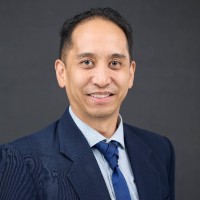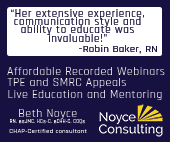by Andrew Pagsisihan, COO, AllCare Provider
L.A. Brief From a Home Health Provider
Direct from the front lines, a California agency owner talks about the experiences and challenges of providing care at home during the devastating California Wildfires.
Healthcare Amid the Flames: How LA's Home Care Agencies Navigate the 2025 Wildfire Crisis
As unprecedented wildfires ravage Los Angeles County in early 2025, healthcare providers face extraordinary challenges in maintaining continuity of care. The combination of low precipitation, parched vegetation, and extreme winds has created the deadliest fire season in California’s history, forcing healthcare facilities to monitor, evacuate, close, or, in some cases, face complete destruction.
While traditional healthcare facilities grapple with mass relocations, home care agencies confront unique challenges due to their care distribution model. Agencies, operating at the intersection of healthcare delivery and disaster response, must maintain accountability for patient care scatter throughout the county while navigating complex evacuation scenarios and communication challenges.

Direct From the Front Lines: Crisis Response in Action
When the fires began, home care agencies immediately activated their disaster response protocols. The first crucial step involved is mapping affected areas and identifying impacted patients and staff members – including consideration of employees’ families, whose situations directly affect the agency’s ability to maintain operations. Internal roles shifted swiftly as the emergency continued to escalate.
Patient status became categorized into four critical groups: Safe, Warn, Shelter-in-Place, or Evacuated as well as triage for importance. For those choosing to shelter in place within evacuation zones, agencies coordinated with physicians, health plans, and local government authorities to ensure proper oversight. Evacuated patients required careful care plan adjustments and staff reallocation, while some chose to temporarily discontinue services altogether.
Communication Challenges and Solutions
The inability to contact certain patients emerged as a significant concern, prompting ongoing outreach efforts and coordination with primary care physicians and health plans to disclose status of their patients. Regional emergency communication systems like REDDINet and Everbridge (provided by Los Angeles county) proved invaluable in managing healthcare service partnerships across the affected population, enabling rapid risk reduction and aid delivery in need.

Bridging the Gap
A crucial role emerged from the “last mile” healthcare workers, who became essential conduits of information about available aid resources to our communities. Many patients, particularly older adults, struggle with and outreach programs especially with disaster aid. Home care agencies have taken on the additional responsibility of enabling patients and their caregivers to access assistance independently as assistant aid becomes available. Especially with scammers praying on these populations.
Federal Response and Specialized Support
As multiple intense fires stretched county and state resources thin, Los Angeles County secured direct FEMA funding and partnership assistance. In a notable development, home care agencies successfully advocated for specialized accommodation at FEMA Disaster Assistance sites, allowing dedicated time slots for home care patients to meet with federal agents – a critical arrangement that acknowledges the unique needs of this vulnerable population.
The ongoing crisis highlights both the resilience of home healthcare systems and the need for specialized disaster response protocols for distributed care models. As climate change threatens to make such events more common, the lessons learned from the 2025 Los Angeles wildfires will likely shape future disaster preparedness strategies for home healthcare providers nationwide.
# # #


Andrew never imagined that a personal experience with home healthcare would transform his engineering career into a heartfelt mission. Today, as Chief Operating Officer of AllCare Provider, he channels his passion for helping others into revolutionizing home health and hospice care. His eyes light up when discussing better outcomes for patients and families – it’s clear this isn’t just a job for him, but a calling.
Drawing from 25 years in healthcare management, Andrew combines technical expertise with deeply empathetic leadership. His colleagues often remark on his ability to remember not just patients’ names, but their stories, families, and dreams. At AllCare Provider, he’s fostered a culture where every team member feels valued and every patient is treated like family.
©2025 by The Rowan Report, Peoria, AZ. All rights reserved. This article originally appeared in The Rowan Report. One copy may be printed for personal use: further reproduction by permission only. editor@therowanreport.com



